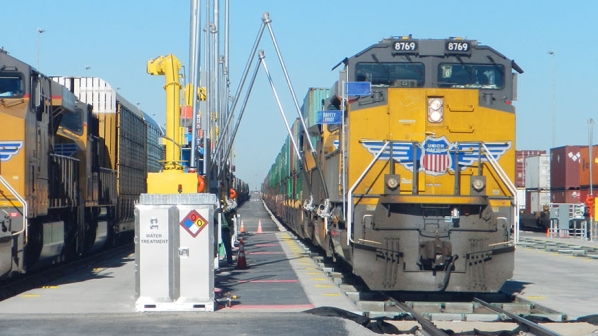Union Pacific
In UP’s fourth quarter and full year results, the railway reported a net income of $US 5.3bn, or $US 7.88 per diluted share, for the 2020 fiscal year, compared with $US 5.9bn, or $US 8.38 per diluted share, in 2019.
This includes an adjusted fourth-quarter income of $US 1.6bn, or $US 2.36 per diluted share, excluding a previously announced $US 278m pre-tax, non-cash impairment charge related to investments in the Brazos classification yard.
Total revenue for the year was $US 19.5bn, compared with $US 21.7bn in 2019, with an operating income of $US 7.8bn, down from 2019.
Freight revenue fell by 10% to $US 18.3bn year-on-year in 2020, with a 7% drop in wagonloads due to a reduction in bulk, industrial and premium freight caused by the economic impact of the Covid-19 pandemic.
Fourth-quarter operating revenue was $US 5.1bn, down 1% vs the same period in 2019, with business volumes as measured by total revenue carloads rising by 3% compared with the period in 2019.
The railway reported an operating ratio of 59.9%, or 58.5% when adjusted for the impairment charge - 210 basis points lower than 2019. UP says that lower fuel prices positively impacted the operating ratio by 130 basis points.
Additionally, UP reports that in 2020, through the application of Precision Scheduled Railroading (PSR) principles, it has made year-on-year improvements to freight wagon velocity (6%), average terminal dwell (8%), locomotive productivity (14%), workforce productivity (11%), train length (14%), intermodal car trip plan compliance (six points), and manifest/autos car trip plan compliance (six points). The railway’s fuel consumption rate has also improved by 2% in 2020 compared with 2019.
UP says that the reportable personal injury rate of 0.90 incidents per 200,000 employee hours for 2020 was the same as levels reported in 2019. The rail equipment incident rate of 3.54 per million train miles improved 17% in 2020, compared with 2019.
UP’s 2020 capital program totalled $US 2.8bn. The railway also repurchased 22 million shares last year, at an aggregate cost of $US 3.7bn.
UP has reported that it anticipates a full-year volume growth of between 4-6% in 2021; 150-200 basis points of operating ratio improvement; and first-quarter volume growth in the low single digits.
“While the economic outlook for 2021 remains uncertain, we will build off our solid 2020 performance to produce continued strong productivity through operational excellence,” says XXX Fritz. “We expect our enhanced service product will support both solid core pricing gains, while also increasing our share of the freight transportation market. Our confidence in our ability to drive value for all of our stakeholders has never been greater.”
CSX
CSX reported fourth-quarter 2020 profits of $US 760m, or $0.99 per share, a slight reduction compared with the $US 771m during the same period in 2019. The earnings include a $US 48m charge, or $0.05 per share after-tax, related to early retirement of debt.
Fourth-quarter revenue fell by 2% to $US 2.83bn from $US 2.89bn in 2019. CSX also reported that intermodal growth“was more than offset by lower fuel surcharge revenue and coal declines.”
Expenses were down 7% year-on-year to $US 1.61bn due to lower fuel expense and efficiency gains. However, quarterly operating income of $US 1.22bn increased 5% from $US 1.15bn for the same period last year.
CSX’s operating ratio came in at 57%, compared with 60% in 2019. The full-year operating ratio was 58.8%, exceeding initial guidance of 59%, despite lower economic activity and operating challenges brought about by Covid-19, the railroad reported.
Looking ahead, CSX expects freight volumes to outpace GDP growth, with merchandise volume growth exceeding industrial production; intermodal volumes growing faster than merchandise; and the coal market improving from 2020 “trough levels.” The company says that it is targeting capital expenditure of between $US 1.7bn and $US 1.8bn for 2021.
“I am extremely proud of how CSX’s team of railroaders continuously rose to the challenges this year presented,” says CSX president and CEO, Mr James Foote. “Throughout this difficult period, they have shown an unwavering commitment to our customers and remained focused on ensuring the delivery of critical goods to millions of Americans.”

